Fertilizers for aquarium plants: types and applications
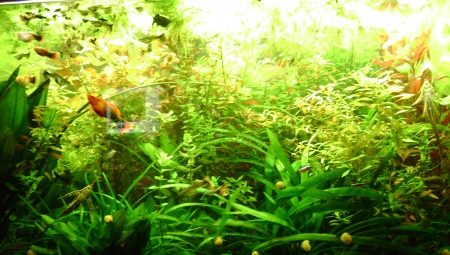
Aquarium plants form the most important part of the ecological system of an artificial reservoir. They are involved in maintaining biobalance, are a source of vitamins for fish and have a decorative function. Just like aquarium inhabitants, it is important for representatives of aquatic flora to organize suitable conditions for keeping, and then they will delight the owner with their flowering for a long time. Therefore, it is necessary to periodically fertilize the aquarium plants.
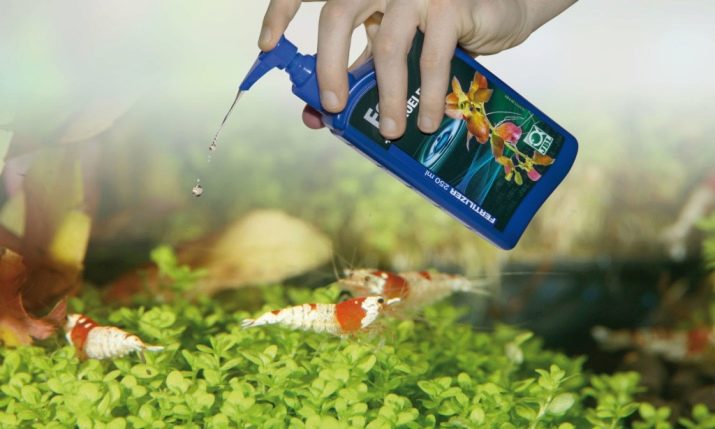
What are they needed for?
The main task of fertilizers is high-quality plant nutrition. Sometimes algae have enough fish waste, which is deposited on the bottom, but this is not enough in all cases. As a rule, each type of fertilizer includes certain elements, each of which is responsible for a certain stage of plant development. For example, dressings can serve as growth activators, improve the appearance of leaves and stems, and make their color more intense.
Up to a certain age, aquarium cultures can feel comfortable even without additional nutrition., but over time, they begin to experience a deficiency of nutrients, their growth slows down, stronger specimens begin to select vital elements from their green neighbors.
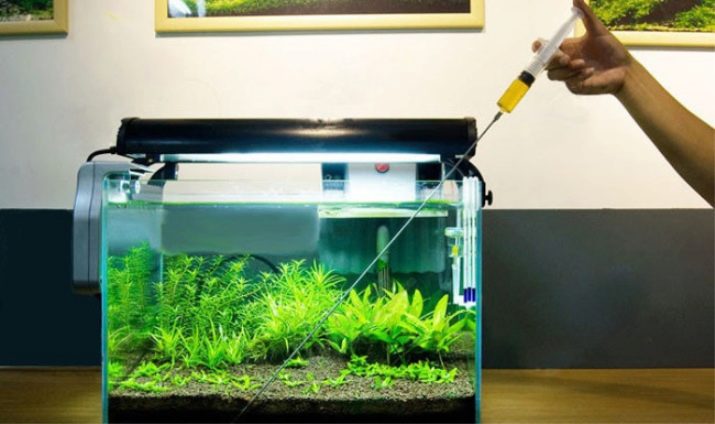
Fertilization is also required if carbon dioxide is used in the aquarium.
Varieties
It is customary to classify aquarium fertilizers into several types.
Micro and macro fertilizers
Now in pet stores it is possible to buy both complex mixtures and individual macro- and micronutrient fertilizers.The choice of the drug should be determined by the state of the green spaces. By visual signs, you can understand what element the culture lacks, and choose the most suitable tool. Most often, these drugs are available in liquid form. The most popular supplements are iron and potassium.
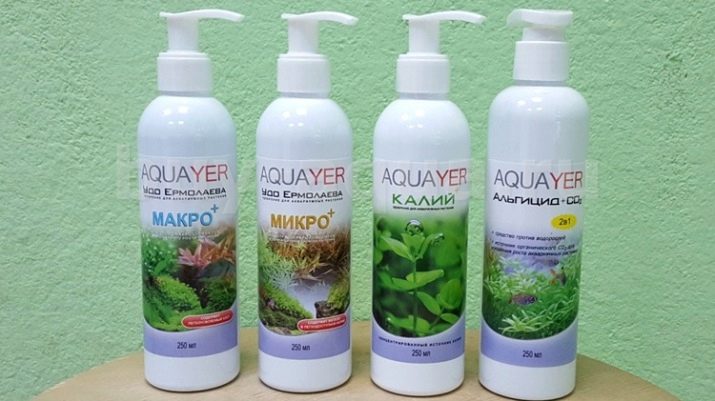
Liquid fertilizers
This species is more suitable for non-rooted aquarium plants. The relevance of liquid forms is explained by the convenience of their use. Thus, the Tetra company is popular, representing fertilizers containing potassium, manganese, iron and other microelements. These products are good because they feed the crops growing in the aquarium, but they do not contribute to the development of harmful algae.
Another popular liquid fertilizer company is Aquabalans. From this brand you can buy liquid complexes with macro- and microelements in the composition, as well as mixtures with iron, phosphorus and other useful substances.
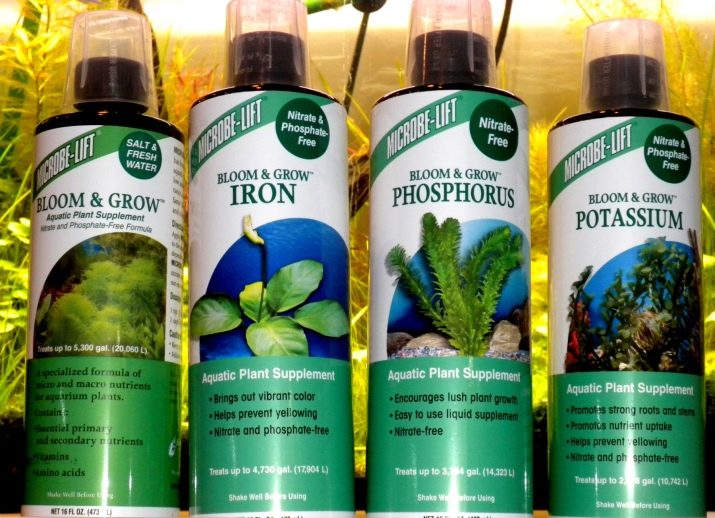
Solid fertilizers
Granules, tablets, nutrient substrate - all these are options for solid top dressing. They are usually placed under the roots or buried in the ground. If liquid fertilizers instantly dissolve, then solid forms enrich plants with useful elements gradually over time. This species has almost no effect on the development of lower algae.
Firms "Tetra" and "Aquabalans" produce products more often in the form of tablets. Also in the assortment of companies there is a substrate that ensures the content of nutrients in the soil.
For accelerated growth, it is recommended to buy substrates with threshing floor or vermicompost.
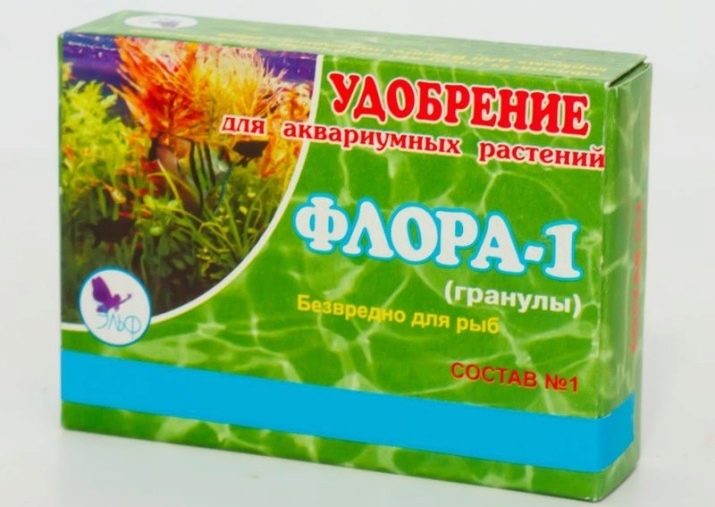
Clay
This type of fertilizer is one of the most available, it is enriched with trace elements and is intended for placement under the roots. Some aquarists sculpt balls of clay and put them in the ground. Clay not only provides plants with additional nutrition, but is also used as an adsorbent, since it has the ability to absorb harmful substances from water.
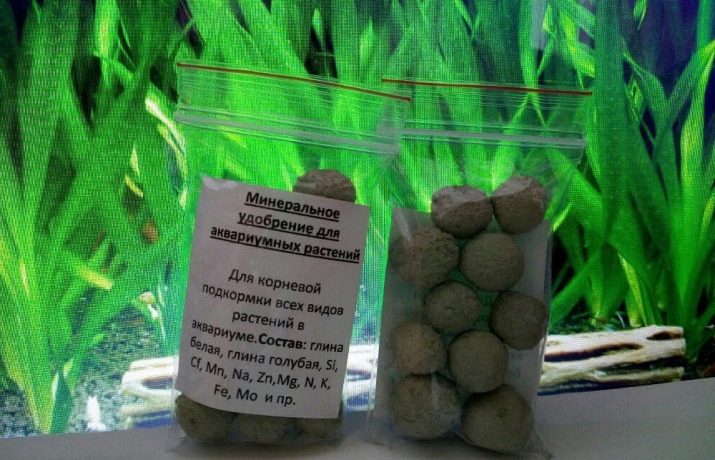
Biohumus
This variety is most often presented in the composition of the substrate, it is usually used in combination with peat. If spot feeding is needed, then biohumus is purchased in the form of granules. Some lovers of aquarium flora independently roll balls of humus, clay and water. Vermicompost is good because it dissolves in water gradually and enriches plants with organic substances for a long time. Among the branded substratum, Bio-Mix products from Aquabalans are popular. These products are intended for root-fed crops.
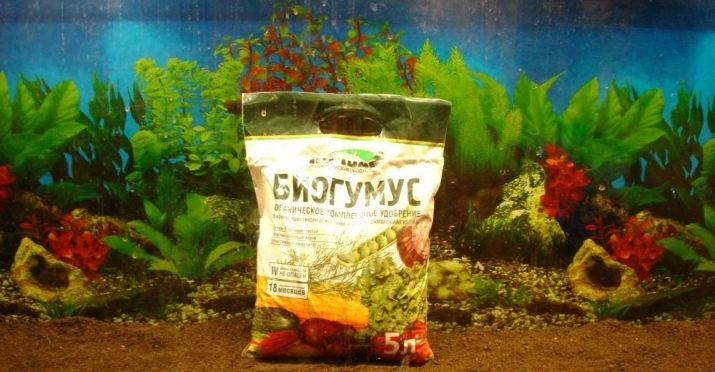
Peat
This type performs several functions at once. It is able to enrich water with useful components, regulate its acidity and soften, destroy fungi and harmful bacteria. It is customary to use peat in the form of a solution, emulsion or granules. Typically, peat is added to the soil at the bottom of the tank.
It can impart a yellowish color to water, which is why many aquarists refuse to use peat.
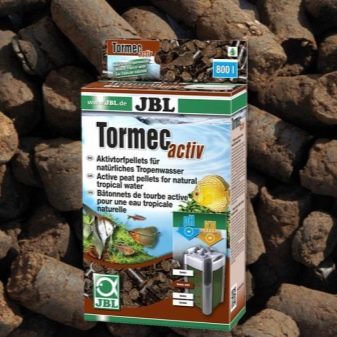
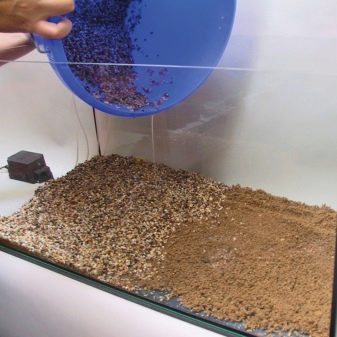
"Sidex"
This variety serves, rather, not for plant nutrition, but for their protection from harmful microorganisms formed by phytoplankton. Sidex is often the only effective way to control the lower algae in the aquarium. It is a chemical agent that kills harmful organisms, but does not harm other crops and aquarium inhabitants. "Sidex" can be of soft and quick action, it is presented in the assortment of many companies, but the more popular is the products of the Tetra brand.
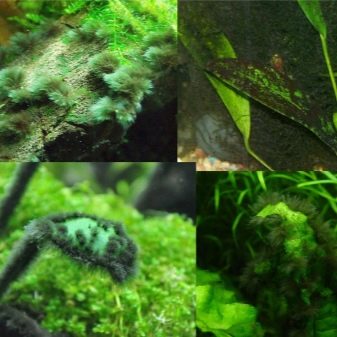

Homemade fertilizers
This type of fertilizer is cheaper for aquarists, and it also allows you to form a mixture of specific elements that the plant currently needs. They can also be liquid or solid. Liquid versions are easier to use, but solid ones allow you to create a nutrient medium for a longer period.

Selection recommendations
When buying fertilizers for aquarium plants, you first need to decide what substances they lack. Take a closer look at the outward appearance of the culture and listen to the following tips.
- If the aquarist wants to give the plant more decorative properties, then it is recommended to choose preparations containing iron, zinc, sodium, phosphorus, potassium. It is better to give preference to complex mixtures.
- To keep the aquarium representative of the flora in good shape, choose products with a high content of nitrogen compounds. This component will prevent the cessation of growth and foliage flying. However, when adding them, it is worth remembering that the abundance of nitrogen can adversely affect the health of the fish, therefore, when feeding herbs, it is important to regulate the serving size.
- If the plant is covered with brown spots, and the leaves begin to darken, then it is likely that it is experiencing a phosphorus deficiency. In this case, buy superphosphates or complex fertilizers with phosphorus.
- When brown or yellow spots are observed on the leaves, it can be assumed that the culture does not have enough potassium, and then it is better to choose potassium monophosphate as fertilizer.
When choosing the type of feeding, be sure to take into account the number of plants in the artificial reservoir, water temperature, carbon dioxide concentration, and the abundance of ultraviolet light.
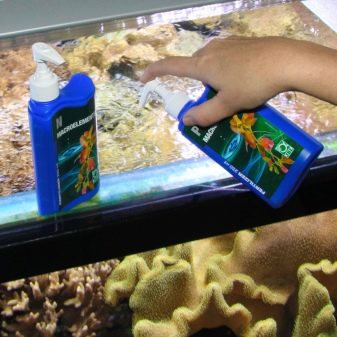
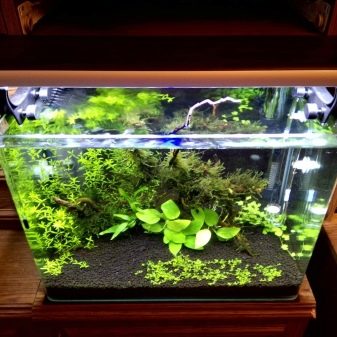
Some hobbyists prefer homemade fertilizers, while others prefer ready-made fertilizers. In the first case, the owner of the aquarium will receive a very budgetary means, however, the preparations necessary for preparation are sold in large portions, and it may turn out that initially quite a lot of money will be spent on the ingredients, and some of them will not be useful. In addition, independent cooking is permissible only when a person is passionate about chemistry and well versed in aquarium hobby.
Purchased funds are much more convenient. They save the customer from the need to carefully calculate the dosage and save time. True, despite the more and more improved formulas, the prices for finished fertilizers are not getting lower. Ready-made preparations include additives that allow them to be stored for a long time, while homemade feeding is easier to re-prepare than to face the fungus. Therefore, it is recommended to keep it in the refrigerator or freeze it.
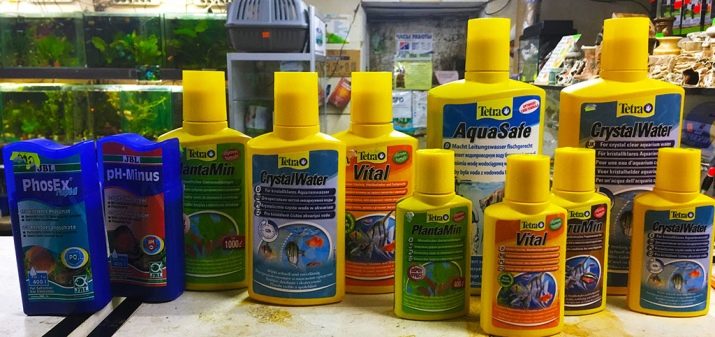
How to make it yourself?
Fertilizers that can be made at home are called samomes. Having studied the external state of plants, one can assume what elements they may lack, and connect specific components. Of course, during the manufacture it is better to consult with a specialist in person, because an inexperienced aquarium lover can ruin the entire underwater world of an aquarium with homemade fertilizer.
To prepare a standard aquarium plant nutritional supplement, you will need:
- iron gluconate - 1 g;
- manganese sulfate - 5.4 g;
- ammonium molybdate - 0.2 g / l;
- copper sulfate - 0.3 g;
- zinc sulfate - 0.7 g;
- boric acid - 17.5 g.
All of these ingredients can be purchased at pharmacies or pet stores. Distilled water is required for cooking. The tap liquid is not suitable for use. The water should have a temperature of 30-40 °, ammonium, copper, zinc, manganese, boron, and iron are successively introduced into it.

To prepare a potassium solution, follow these steps:
- boil distilled water in a volume of 350 ml to 60-70 ° and cool;
- add magnesium sulfate (5 g), citric acid (15 g), zinc sulfate (0.5 g), copper (0.5 g), ferrous sulfate (5 g) to the water;
- leave the solution for an hour so that the components begin to interact;
- add boric acid (0.15 g), potassium sulfate (4.5 g), vitamin B12 (1 ampoule), cytovit (2 ampoules), ferrovit (2 ampoules), sulfuric acid (10 ml) to the mixture.
- Add water to a volume of 500 ml and stir well.

When and how to deposit?
The above sammes is added to the container at the rate of 0.5 ml of the product per 100 liters of water. The maximum allowable portion is 1 ml. It is very important not to overdo it with the ingredients, otherwise the aquarist will be left without green spaces and without aquarium animals. It is customary to use a potassium solution every day, 1 ml for every 50 liters of water volume.
Potassium supplements should be applied immediately when starting up the aquarium, but with nitrogen and phosphorus compounds, experienced aquarists advise to wait about a week. This approach motivates the rhizome of the plant to independently obtain food in the soil, and this has a positive effect on the growth of the culture. It is advisable to add trace elements in the morning, macronutrients - in the evening.
To calculate the proportions of purchased supplements, it is important to read the instructions provided. So, it is recommended for beginners to introduce the drug according to scheme E. This option is good because it promotes intensive growth of crops and rich color of greenery. Scheme E is used more often in those reservoirs, most of which are vegetation. For aquariums where flora and fauna are equally abundant, the PPS scheme is recommended.
This option can stop the development of plants when the owner needs it.
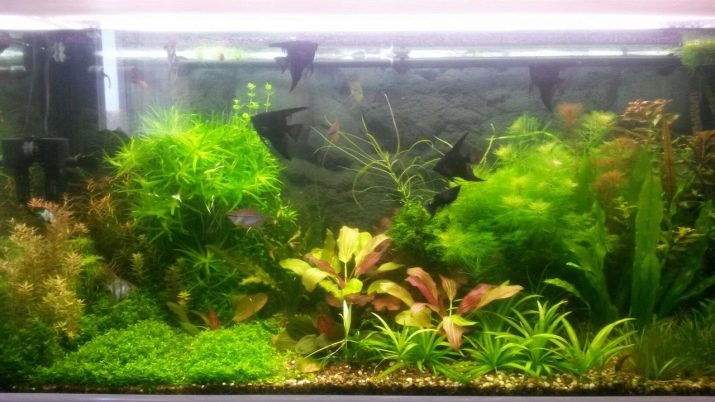
If Sidex is used in the aquarium, the dosage is determined by the purpose of use. For preventive measures, 5-7 ml per 100 liters of water are used, with insignificant contamination - 12 ml, the maximum allowable portion is 20 ml per 100 liters of water. It is customary to apply this remedy in the morning. It is believed that the drug is safe for aquarium inhabitants, however, there are cases when some species of snails died during its use, therefore it is still recommended to plant all representatives of the fauna during the treatment of the aquarium.
Recently, an auto-dispenser has been popular, which makes it possible to evenly distribute fertilizers in the right proportions throughout the aquarium. Its main feature is the automatic supply of the drug, that is, the aquarist does not have to monitor whether his plant has been feeding or not - the dispenser will take care of this. The most popular are models that work on the principle of osmosis. The mechanism of its work is that the aquarium water drop by drop pushes the liquid feed through the tube. Thus, the vegetation is always supplied with the necessary amount of fertilizer. Noticing that the water in the dispenser is getting clearer, the owner will know that it is time to add fertilizer.

Some aquarists make their own autosamplers, which is cheaper but can be time consuming. Purchased pipettes are not cheap, but their work is highly regarded by hobbyists. Models from Dennerle are especially popular.
For information on what fertilizers are used for aquarium plants, see the next video.








